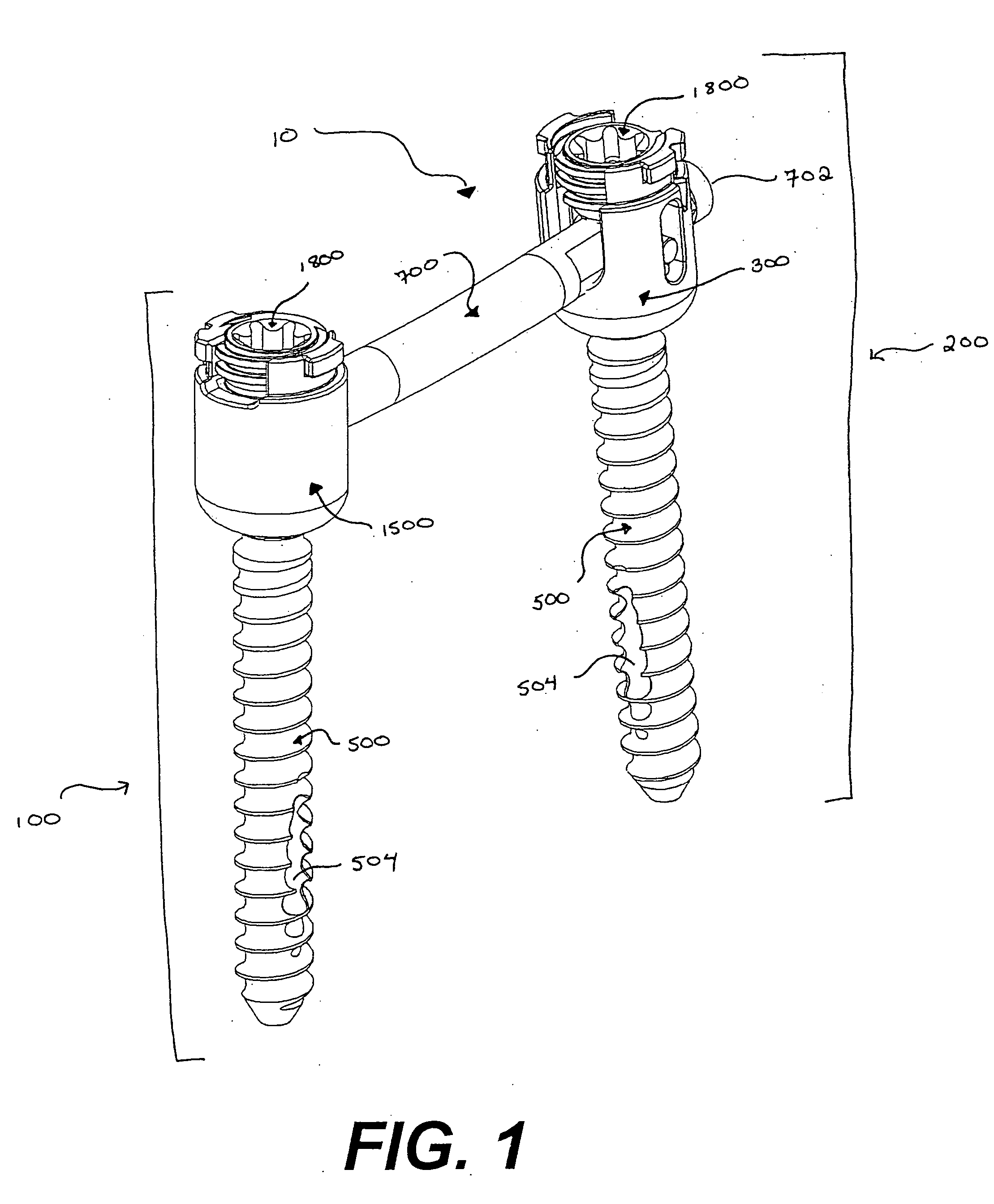Implant assembly and method for use in an internal structure stabilization system
a technology of internal structure and stabilization system, which is applied in the direction of ligaments, instruments, gearing, etc., can solve the problems of reducing the height of the intervertebral disc, reducing the height of the disc, so as to achieve the effect of locking out the conical freedom of the anchor
- Summary
- Abstract
- Description
- Claims
- Application Information
AI Technical Summary
Benefits of technology
Problems solved by technology
Method used
Image
Examples
Embodiment Construction
[0102] To better understand the devices, assemblies, tools, and methods described below, and understanding of the procedure through which the back stabilization of the present invention is placed into the vertebrae of a patient is required. Reference is made to the figure numbers where specific embodiments of the devices, assemblies, tools and methods are described in greater detail to aid in the understanding of those particular items.
[0103] An operation to insert a pedicle screw assembly into a patient's back to immobilize certain vertebrae in order to allow bone grafts to ultimately fuse those vertebrae begins with the surgeon inserting a standard bone biopsy needle into the pedicle of a first vertebra and using the bone biopsy needle to place a guide wire where the first pedicle screw should be inserted. Using the guide wire, progressively larger tissue expanders are inserted into the patient to expand, or dilate, the incision to the size necessary to accommodate the instrument...
PUM
 Login to View More
Login to View More Abstract
Description
Claims
Application Information
 Login to View More
Login to View More - R&D
- Intellectual Property
- Life Sciences
- Materials
- Tech Scout
- Unparalleled Data Quality
- Higher Quality Content
- 60% Fewer Hallucinations
Browse by: Latest US Patents, China's latest patents, Technical Efficacy Thesaurus, Application Domain, Technology Topic, Popular Technical Reports.
© 2025 PatSnap. All rights reserved.Legal|Privacy policy|Modern Slavery Act Transparency Statement|Sitemap|About US| Contact US: help@patsnap.com



